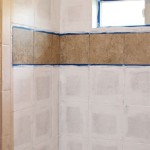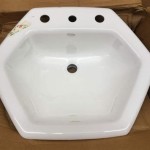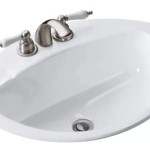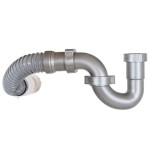How To Get Rid Of Stinky Bathroom
A consistently foul-smelling bathroom presents an undesirable, and often embarrassing, situation. The unpleasant odors can stem from a variety of sources, ranging from poor ventilation to bacterial growth and accumulation of waste. Addressing this issue requires a systematic approach, targeting the potential causes and implementing effective cleaning and preventative measures. This article outlines several strategies for eliminating bathroom odors and maintaining a fresh, sanitary environment.
Identifying the Source of the Odor
The first step in combating a stinky bathroom is pinpointing the origin of the offensive smell. Without identifying the root cause, any cleaning efforts will only provide temporary relief. Several areas within the bathroom are particularly prone to harboring unpleasant odors and therefore warrant careful inspection.
Toilets: Toilets are a common culprit. Even with regular flushing, residue and bacteria can accumulate within the bowl, under the rim, and around the base. A buildup of mineral deposits from hard water can also contribute to odors. Further, a malfunctioning wax ring beneath the toilet can allow sewer gases to escape into the bathroom. Leaks, even small ones, around the toilet base can promote mold and mildew growth, exacerbating the problem. A thorough inspection involves checking for visible staining, cracks, and leaks, as well as examining the condition of the wax ring if the odor persists despite regular cleaning.
Drains: Sink, shower, and tub drains are notorious for trapping hair, soap scum, and other organic matter. This debris decomposes over time, creating a breeding ground for bacteria and producing a distinctly unpleasant smell. Drainpipes can also develop biofilms, which are layers of microorganisms that cling to the pipe walls and release foul odors. Check drains regularly for clogs or slow drainage. The "P-trap," the U-shaped section of pipe under the sink, is designed to hold water and prevent sewer gases from entering the bathroom. If this trap is dry (often due to infrequent use of the sink), sewer gas can leak into the room. Periodically running water down the drain will replenish the water in the P-trap and mitigate this issue.
Shower Curtains and Liners: Shower curtains and liners, particularly those made of plastic or vinyl, are susceptible to mold and mildew growth. The warm, humid environment of the shower provides ideal conditions for these organisms to thrive. Look for discoloration, staining, or a musty smell. The folds and crevices of the curtain or liner are particularly vulnerable. Fabric shower curtains can also absorb moisture and odors over time, requiring more frequent laundering.
Ventilation: Inadequate ventilation allows moisture to linger in the bathroom, creating a breeding ground for mold and mildew. A properly functioning exhaust fan is crucial for removing humid air after showers and baths. Check that the fan is operating effectively and free of dust and debris. If the bathroom lacks an exhaust fan, opening a window while showering or bathing can help improve air circulation. After showering, ensure the bathroom door remains open to allow for further ventilation. If a window is present and the weather permits, opening it for a period after use can reduce moisture build-up.
Trash Cans: Bathroom trash cans often contain used tissues, cotton swabs, and other sanitary items, which can contribute to unpleasant odors, especially if the trash can is not emptied regularly. Using a trash can with a lid and lining it with a plastic bag can help contain odors. Regular emptying and cleaning of the trash can with a disinfectant solution are essential.
Cleaning Supplies and Storage: Storing cleaning supplies in the bathroom can also contribute to unwanted scents, particularly if they are infrequently used or improperly sealed. Check for leaks or spills and ensure that all containers are tightly closed. Damp cleaning cloths and sponges can also harbor bacteria and produce odors; these should be cleaned and dried thoroughly after each use.
Implementing Effective Cleaning Strategies
Once the source of the odor has been identified, targeted cleaning strategies can be implemented to eliminate the smell and prevent its recurrence. Different surfaces and areas within the bathroom require specific cleaning methods and products to ensure effective sanitation and odor removal.
Toilet Cleaning: Regular toilet cleaning is crucial. Use a toilet bowl cleaner that contains bleach or another disinfectant. Follow the product instructions carefully, allowing the cleaner to dwell for the recommended time before scrubbing with a toilet brush. Pay particular attention to the underside of the rim, where bacteria and mineral deposits can accumulate. For stubborn stains, a pumice stone can be used to gently scrub away mineral deposits. If you suspect a wax ring issue, consider consulting a plumber to replace it. When cleaning, wear gloves and eye protection to avoid contact with harsh chemicals. After cleaning, ventilate the bathroom well.
Drain Cleaning: For slow-draining sinks, showers, or tubs, remove any visible hair or debris from the drain opening. Pouring boiling water down the drain can help to loosen minor clogs. A mixture of baking soda and vinegar followed by hot water is an effective natural drain cleaner. Pour about a cup of baking soda down the drain, followed by a cup of vinegar. Let the mixture fizz for about 30 minutes, then flush with hot water. For more stubborn clogs, a drain snake or plunger may be necessary. Chemical drain cleaners should be used with caution, as they can damage pipes and are often harmful to the environment. For chronic drain problems, consider having a plumber inspect the pipes for more serious blockages or issues.
Shower Curtain and Liner Cleaning: Shower curtains and liners should be cleaned regularly to prevent mold and mildew growth. Plastic or vinyl liners can be wiped down with a solution of bleach and water (1 part bleach to 10 parts water). Rinse thoroughly and allow to air dry. Fabric shower curtains can be laundered in the washing machine with a mild detergent and bleach (if the fabric allows). Hang the curtain to dry completely. Consider replacing shower curtains and liners every few months, especially if they are heavily stained or difficult to clean. A good practice is to spread the shower curtain out after showers so they can dry easier and prevent mold.
Surface Cleaning: Clean all bathroom surfaces regularly with a disinfectant cleaner. This includes countertops, sinks, faucets, mirrors, and walls. Pay particular attention to areas that are frequently touched, such as light switches and door handles. Mold and mildew can be removed with a solution of bleach and water. Always test the solution on an inconspicuous area first to ensure it does not damage the surface. Wear gloves and eye protection when working with bleach. For natural stone surfaces, use a cleaner specifically designed for stone to avoid damage.
Implementing Preventative Measures
Maintaining a fresh-smelling bathroom requires consistent effort and the implementation of preventative measures to minimize the buildup of odors. These measures should be integrated into a regular cleaning routine to ensure long-term success.
Regular Ventilation: Ensure adequate ventilation is maintained. Run the exhaust fan during and after showers and baths for at least 15-20 minutes. If the bathroom lacks an exhaust fan, open a window or leave the door ajar to improve air circulation. Regularly clean the exhaust fan to remove dust and debris. If the bathroom is often humid, consider purchasing a dehumidifier. Use it to reduce the bathroom's humidity and prevent moisture build up. The dryer the bathroom is, the less likely mold and mildew are to grow.
Consistent Cleaning Schedule: Establish a regular cleaning schedule and stick to it. Light cleaning tasks, such as wiping down surfaces and emptying the trash can, should be performed daily or every other day. More thorough cleaning, including toilet cleaning, drain maintenance, and shower curtain cleaning, should be done weekly or bi-weekly. Promptly address any spills or messes to prevent them from becoming sources of odors. Consistent cleaning prevents the build-up of odor causing bacteria.
Odor Absorbers: Place odor absorbers in the bathroom to help neutralize unpleasant smells. Baking soda is a natural odor absorber that can be placed in an open container in the bathroom. Charcoal filters can also be effective at absorbing odors. Commercial air fresheners and odor eliminators can be used, but choose products that are free of harsh chemicals and fragrances. Essential oil diffusers can provide a pleasant scent while also helping to purify the air. If the bathroom is prone to odor, consider keeping odor absorbers in the bathroom at all times. Regularly replace or refresh odor absorbers as necessary.
Proper Waste Disposal: Use a trash can with a lid and line it with a plastic bag. Empty the trash can frequently, especially if it contains sanitary items. Dispose of items that can contribute to odors, such as used tissues and cotton swabs, promptly. Clean and disinfect the trash can regularly. Consider using a trash can with a foot pedal to minimize contact with potentially contaminated surfaces.
Plumbing Maintenance: Regularly check for leaks around the toilet, sink, and shower. Address any leaks promptly to prevent mold and mildew growth. Periodically flush unused drains to replenish the water in the P-traps and prevent sewer gases from entering the bathroom. If you experience frequent plumbing problems, consider having a plumber inspect your pipes. Addressing even small plumbing issues can help to prevent future problems. Inspect and if necessary, replace the wax ring under the toilet every few years to prevent sewer gas leaks.
By consistently implementing these strategies, it is possible to eliminate unpleasant odors and maintain a fresh, clean, and inviting bathroom environment. Identifying the source of the odor, implementing effective cleaning strategies, and establishing preventative measures are all crucial components of a successful odor control plan.

7 Indispensable Bathroom Smell Remover S In Housekeeping

How To Get Rid Of Sewage Smell In Your Bathroom Bond Cleaning Adelaide

How To Make Your Bathroom Smell Good 10 Genius S Get The Stink Out Bright Side

How To Make Your Bathroom Smell Good 10 Genius S Get The Stink Out Bright Side

Get Rid Of Stinky Bathrooms Once And For All Making Lemonade

Smelly Bathroom 4 Tips From Our Bentleigh Plumbers Watermaster Plumbing

How To Make Your Bathroom Smell Good 10 Genius S Get The Stink Out Bright Side

7 Indispensable Bathroom Smell Remover S In Housekeeping

How To Get Rid Of Bathroom Odors Bob Vila

How To Make Your Toilet Smell Nice 10 Easy S







